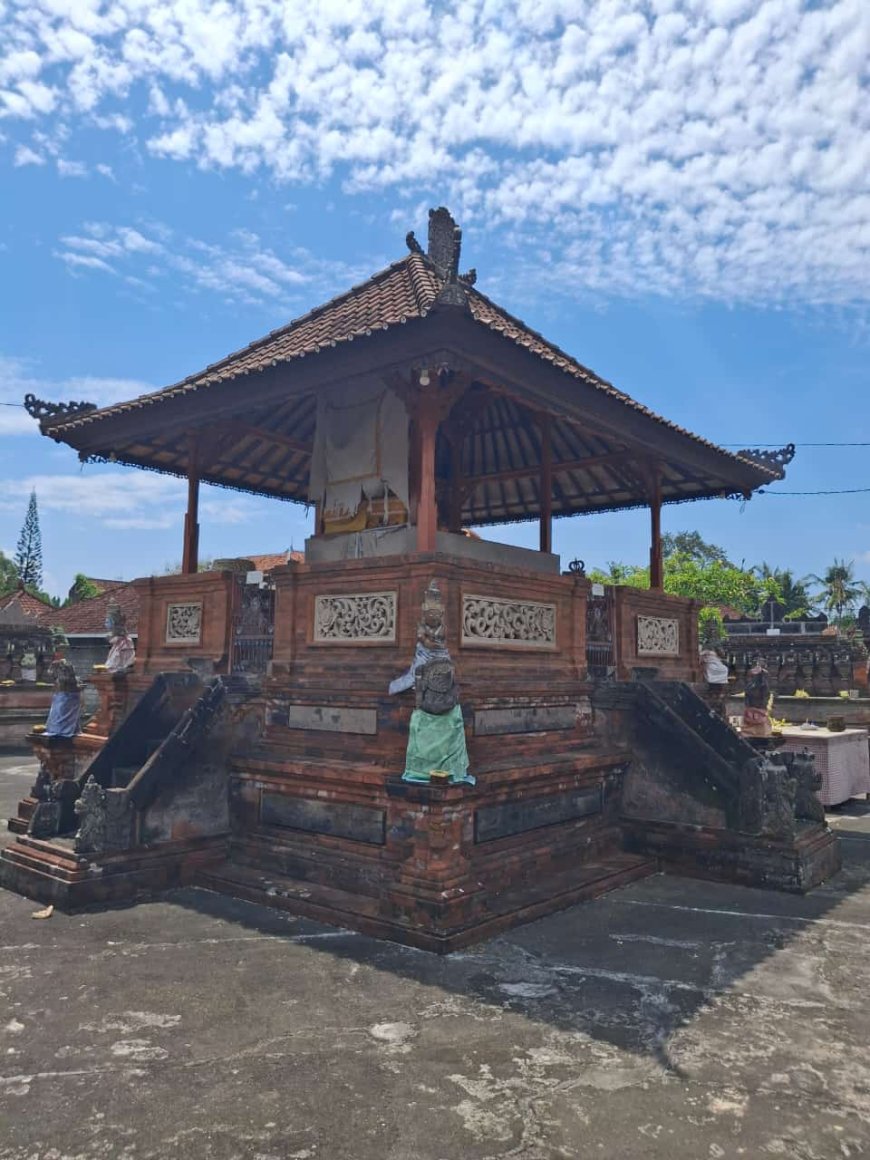Pura Luhur Catur Kanda Pat Sari: Four Paths of Wisdom in the Circle of Dewata Nawa Sanga
Pura Luhur Catur Kanda Pat Sari in Denpasar reflects Hindu spirituality through the concept of Catur Marga and is revered as the center of Dewata Nawa Sanga. The temple preserves its traditional architectural essence while bearing witness to history and culture. With shrines symbolizing natural balance, it stands as a symbol of spiritual harmony and Bali's cultural heritage.
Bali is an island deeply intertwined with Hindu spirituality and culture. One of the sacred places that embodies this spirituality is Pura Luhur Catur Kanda Pat Sari. This temple is not merely a place for prayer; it is a center of four paths to knowledge, known as Catur Marga. These paths guide devotees through four spiritual approaches: knowledge (Jnana Marga), good deeds (Karma Marga), devotion (Bhakti Marga), and self-control (Raja Marga). This concept helps Hindus attain spiritual balance in life, with the temple’s structure also aligning with the concept of nine directional guardians, known as Dewata Nawa Sanga.

Main Gate of Pura Luhur Catur Kanda Pat Sari (Image Source: Personal Collection)
Location and Brief History
Pura Luhur Catur Kanda Pat Sari is located in Banjar Peguyangan Kaja, Peguyangan Village, Denpasar, Bali. Accessible for both locals and tourists interested in Bali’s spiritual culture, the temple holds significant importance for the local community and hosts many rituals and ceremonies.
The temple has a long history and has undergone major renovations, particularly in 1995 and 2007, to maintain its strength as a cultural and spiritual site. While updated, these renovations respect the temple’s original structure, preserving the traditional architecture’s deep symbolism and significance. Every element within the temple—shrines, gardens, and pools—is harmoniously arranged to create a sacred and natural atmosphere.

Sacred and Harmonious Atmosphere of Pura (Source: Personal Collection)
The Four Paths of Knowledge: Catur Marga
The foundation of this temple is based on Catur Marga, four main paths toward spiritual wisdom: Jnana Marga (Knowledge): Encourages gaining insight and understanding to connect with the universe and Sang Hyang Widhi (God). Karma Marga (Good Deeds): Emphasizes good actions that bring harmony to oneself and one’s surroundings. Bhakti Marga (Devotion): Cultivates gratitude through sincere offerings. Raja Marga (Self-Control): Involves meditation and self-discipline to achieve inner peace.
Concept and Structure of Dewata Nawa Sanga Shrines
At the center of the temple area stands the main shrine dedicated to Hyang Siwa, which serves as the core of the entire temple complex. Surrounding this shrine are nine other shrines, each representing a directional guardian. Each shrine embodies Dewata Nawa Sanga, the nine directional gods believed to protect and balance the universe from all directions.
Shrine Structure and Placement of Dewata Nawa Sanga
The Dewata Nawa Sanga concept in this temple involves nine guardian deities positioned at the nine compass points, with the central shrine, Palinggih Hyang Siwa, serving as the primary meditation and spiritual energy gathering point. This symmetrical structure, with seven steps on each side, creates a sacred ambiance at the temple’s center.

Palinggih Hyang Siwa (Source: Personal Collection)
Around Hyang Siwa, other shrines are dedicated to directional deities. In the east, Palinggih Hyang Iswara is positioned alongside special gardens and Tirta Sanjiwani, a sacred spring.

Special Garden (Source: Personal Collection)
To the north is Palinggih Hyang Wisnu with Tirta Kamandalu, symbolizing the water of life. The west features Palinggih Hyang Mahadewa with Tirta Kundalini, while the south holds Palinggih Hyang Brahma, overseeing Tirta Pawitra. These gardens are designed to maintain the balance of natural elements around the temple, complete with lotus ponds and perantenan.
Rituals and Sacred Water (Tirta) Usage
Rituals at Pura Luhur Catur Kanda Pat Sari include pengaruman ceremonies and the offering of tirta, sacred water used for spiritual cleansing and balancing energies. This water is sourced from various shrines, each with a unique significance—Tirta Kamandalu brings prosperity, while Tirta Sanjiwani is believed to provide life energy. During these rituals, devotees seek blessings and protection from the deities, reinforcing their connection with nature and the divine.

Tirta Kamandalu (Source: Personal Collection)
A Symbol of Harmony in Catur Marga and Dewata Nawa Sanga
Pura Luhur Catur Kanda Pat Sari stands as a symbol of harmony within the teachings of Catur Marga and Dewata Nawa Sanga. It holds a special place in the spirituality of the Balinese community, honoring cosmic balance and the relationship between humans and nature. Every shrine and element in this temple reflects the spiritual awareness embedded within Balinese culture and tradition, making the temple not only a place of worship but also a timeless cultural heritage.




































































